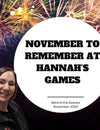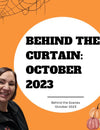Other Game Ranges

Here we are with for my third post in the Essential Guide to Organising a GREAT Easter Hunt series! It seems that easter has become a bigger and bigger occasion each year, and I could not be happier! A lovely long weekend without all the hassle of thoughtful gift giving (do I sound a miserable cow?! I think I do!). All I need to do is organise family egg hunt, eat a big roast dinner and then consume lots of lovely chocolate - sounds like my kind of Bank Holiday weekend!
I'm assuming we've agreed on the egg hunt style from the first post in this series, collected all your essential supplies as per part 2 and now you're ready to get down and dirty with the Egg Hunt Planning! To use this guide you might be using my pre-made Easter Egg Hunt Clues (either indoor, outdoor or both) however the premise works fine if you're writing your own too.
I have a free printable worksheet download to make following these steps even easier - to get that click here
Step 1: Selecting locations and clues to visit

How many locations do you want your hunt to visit?
This is in the eye of the beholder! You may want the hunt to be very short if young children are likely to be participating or a bit longer to add some challenge for the older ones. Thinking clearly from the start roughly how many 'locations' you want the hunt to visit will help. My premade hunts have 20 indoor or 20 outdoor clues (and the duo has all 40) so you have many options. I'd suggest ten to fifteen locations would be enough for a standard hunt and you could save the rest for next year.
Which clues do you want to use?
Go through the list of clue locations and tick all the locations you want the hunt to visit in your house or garden. Consider the geography of the area you're planning the hunt in, it's good to have them moving around as much as possible so try and get them to cover as much of the area as possible rather than staying all in one area. Once you've decided on the clues you want to use put them all together in a pile. The remaining cards you can either discard or set aside for next year's hunt!
If you're writing your own clues you now have your list of locations to write each clue for and should do that now, if you've got pre-written clues move straight on to the next step
Step 2: Planning the route

Planning the order of the clues
This is the fun part! Deciding where they will visit! Dependent on how exhausting you want to make the adventure depends on the order you lay the clues. You can have them do all the kitchen clues together, then all the bedroom ones then all the bathroom ones...however I am little more mischievious! I do a kitchen clue, then send them up to a bedroom, then a lounge clue, then back upstairs to the bathroom etc etc so they tear around the house. Make them work for the goodies I say! Same would apply in the garden or an indoor & outdoor hunt. You will also want to consider where in the house you are going to hide the end 'loot' or if you are going to quickly put it on the dining room table while they are searching about upstairs during the hunt or if it will be already in one of the locations. Personally I always decide on my first and last location and then fill the rest in the middle!
Once you've decided upon your order of clues, go back to your locations list and give each location the number in the order it will be visited on the hunt eg if you are going to get them to visit the wellie boot first you'd write 1 next to that location. At this point I also order the clue cards so it is easier for me to lay them out on the Big Day and write on the back the order they will be visited.
Ordering the Clues
Now your route is all sorted it is time to order your clue cards to match your plan and number the back of them (you don't have to, but it makes it a LOT easier on the day! ) So if trees is your first location, the clue which leads hunters to the trees will be numbered '1', if they are then heading to the garage door the clue which sends them there will be labelled '2'. on so on until all your clues are numbered and in order.
Optional step 3: Creating your Master Sheet

You can use the clues straight from this point and just lay your trail, however I like a little bit of belt and braces and put in an extra step because well, I am a control freak and I like things to run like clockwork! So, I have all the clue numbers, and their answers written out in order before the hunt. I find it makes it easier when I am laying the trail out on Easter Sunday as having to hide the clue before in the location of the next one seems to me totally straight-forward beforehand but seems to totally do my head in when I am walking round my house trying to lay it out! I have created a template to use here.
This sheet also comes in handy as a quick reference master answer sheet for if the kids can't solve a clue or if the hunt gets disrupted (we found the the dog had nicked one of the plastic eggs one year which was messed everything up!). For this purpose I have created a little additional worksheet to complete in the download. To use this simply copy out, in order, your list of locations from the last step in column write the list of visit locations from the last step in column 1 and then scan across to see where to hide that clue. You can copy out the locations again in the next column but I just scan back to the row above. I also tick off when each clue is hidden so I know where I am if I get interrupted while laying the trail (this happens to me a lot!).
Step 4: Prepping the chocolate

Okay now it is time to try and resist eating some of those little foil covered chocoalte eggs we bought (spoiler - I never bother to resist!). Of course if you are using something non-chocolate that is fine but I use chocolate and have no plans to change that currently. Now it is time to pre-fill the plastic eggs with the mini foil covered eggs (see the supplies post if this makes no sense!). Start by working out how many little palstic eggs you will need for the hunt. I generally have one little plastic egg per-location, per-participant with two or three of the tiny eggs in each one or in some of them a creme egg! I also like to give each participant a 'colour' egg to collect - so the older child may always collect the red eggs while the younger gets the green. This enables me to vary the chocolate inside should I want to and change up the level of difficulty - so I can hide some eggs in more challenging places for the older kids (yes - I am mean like that 😉).
Once you've 'loaded' your eggs set them aside with your main loot stash, clues and any 'en route' prizes you may have decided on and you're ready for laying the trail...which helpfully is our next and final instalment of this series!
Leave a comment








